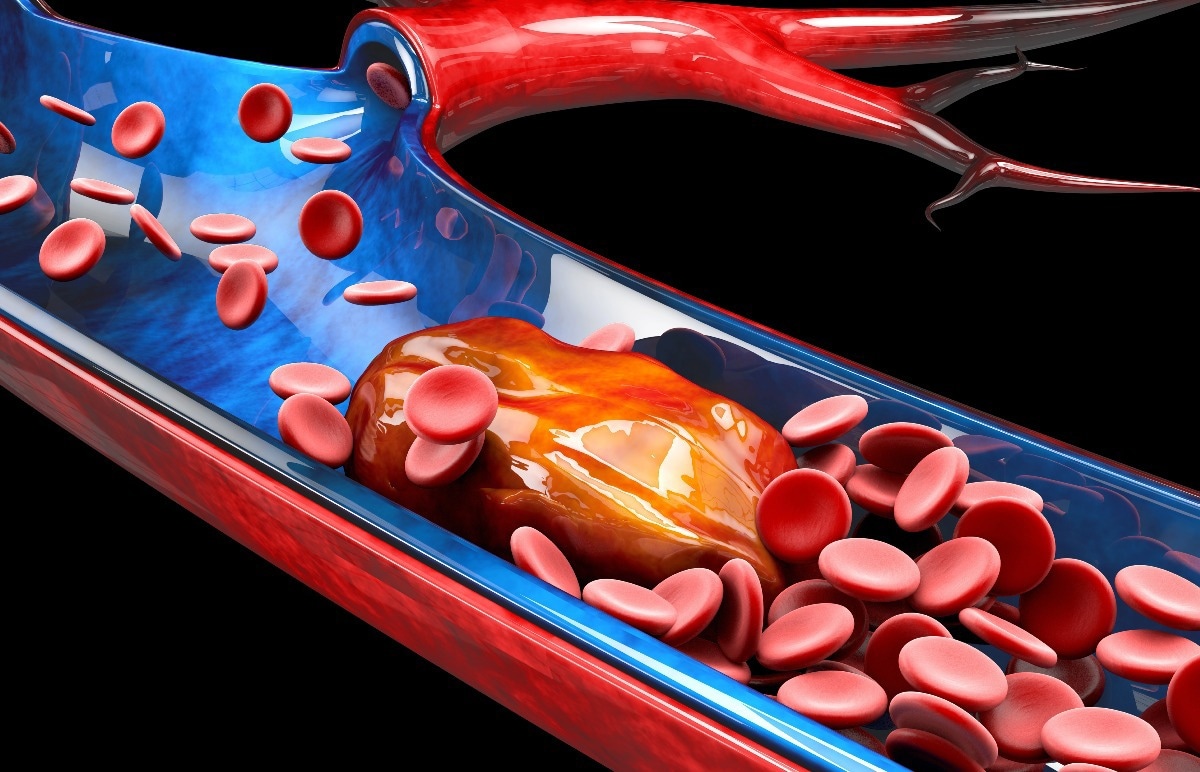In a recent study published in the JAMA Network journal, researchers assessed the association of coronavirus disease 2019 (COVID-19) and influenza with thrombotic events among patients.
 Study: Association of COVID-19 vs Influenza With Risk of Arterial and Venous Thrombotic Events Among Hospitalized Patients. Image Credit: Victor Josan/Shutterstock
Study: Association of COVID-19 vs Influenza With Risk of Arterial and Venous Thrombotic Events Among Hospitalized Patients. Image Credit: Victor Josan/Shutterstock
Background
Severe acute respiratory syndrome coronavirus 2 (SARS-CoV-2) infection is deemed an acute respiratory illness. However, studies have reported that COVID-19 could induce a hypercoagulable state leading to venous and arterial thromboembolism. Almost 30% of COVID-19-hospitalized patients experience thromboembolism. Yet, the incidence, risk factors, and consequences associated with COVID-19-induced thromboembolism still require extensive research.
About the study
In the present study, researchers estimated the 90-day risk of venous and arterial thromboembolism in patients hospitalized due to COVID-19 compared to patients hospitalized due to influenza.
The team performed a retrospective cohort study with data collected from the US Food and Drug Administration (FDA) Sentinel System. Participants included in the COVID-19 cohort were those (1) who had a history of initial COVID-19 International Classification of Diseases-10 (ICD-10) diagnosis code or a positive nucleic acid test result for COVID-19 recorded between 1 April 2020 and 31 May 2021, (2) aged 18 years and above at the time diagnosis, and (3) having continuous pharmacy and medical coverage during diagnosis of 365 days or longer.
Participants eligible for the influenza cohort included (1) patients with an initial ICD-10 diagnoses code for influenza or a positive nucleic acid test result for influenza recorded between 1 October 2019 and 30 April 2019, (2) patients aged 18 years and above at the time of diagnosis, and (3) patients having continuous pharmacy and medical coverage during diagnosis of 365 days or longer. The study included patients diagnosed in the influenza season between 2018 and 2019 to ensure that the influenza patients were not co-infected with COVID-19.
The primary outcomes of the study included (1) inpatient arterial thromboembolism, which was defined as a contributory or principal hospital discharge diagnosis of ischemic stroke or acute myocardial infarction, and (2) inpatient venous thromboembolism which was defined as a contributory or principal hospital discharge diagnosis of pulmonary embolism or acute deep vein thrombosis. The secondary outcome included an expanded arterial thromboembolism endpoint and an expanded venous thromboembolism end-point. The primary and secondary outcomes for thrombotic events were recorded for influenza patients through 29 July 2019 and COVID-19 patients through 29 August 2021.
Results
The study results showed that 41,443 patients were COVID-19-hospitalized before the SARS-CoV-2 vaccines were made available, 44,194 patients were COVID-19-hospitalized when the vaccines were available, and 8269 patients were influenza-hospitalized. Compared to influenza cohorts, the COVID-19 cohorts included patients who were comparatively older and had a lower number of White and female patients with a higher proportion of patients having comorbidities. Compared with COVID-19 patients, influenza patients had a higher prevalence of asthma, heart failure, chronic obstructive pulmonary disease (COPD), and dispensed corticosteroids.
The 90-day absolute risk of experiencing arterial thromboembolism was 14.4%, 15.8%, and 16.3% among patients hospitalized due to influenza, and COVID-19 before and after the availability of vaccines, respectively. In each patient group, the 90-day risk of arterial thromboembolism was remarkably higher in patients who were male, older, hospitalized in the intensive care unit (ICU), needed mechanical ventilation, or had a previous record of cardiovascular disease. Notably, among COVID-19 patients across all study groups, the risks associated with arterial thromboembolism were comparable.
Additionally, the risk of arterial thromboembolism was not remarkably higher among COVID-19 patients before vaccine availability than after the vaccines were made available. Furthermore, the association of arterial thrombosis was comparable with a hospital or emergency department discharge diagnosis of ischemic stroke, acute myocardial infarction, transient ischemic attack, peripheral artery disease, or angina among COVID-19 patients before and during vaccine availability. Comparing the incidence of arterial thrombotic events among influenza patients, 30-day all-cause mortality was remarkably higher among COVID-19 patients before and during vaccine availability.
The team also noted that the 90-day absolute risk of venous thromboembolism among patients hospitalized with influenza, and COVID-19 before and during vaccine availability was 5.3%, 4.1%, and 10.9%, respectively. Furthermore, in each patient group, the 90-day risk of venous thromboembolism was elevated among patients admitted to the ICU, who needed mechanical ventilation, or had a prior venous thrombotic event.
When patients who did not have a previous record of venous thromboembolism were compared to those with influenza, the risk of experiencing venous thromboembolism was higher for COVID-19 patients before and during vaccine availability. Moreover, among patients having a previous record of venous thromboembolism and patients with influenza, the risk of reporting subsequent venous thromboembolism was not considerably higher among COVID-19 patients before vaccination ability compared to that during vaccine availability.
Overall, the study findings highlighted a significant correlation between hospitalized COVID-19 patients and hospitalized influenza patients with a higher risk of experiencing venous thromboembolism within 90 days.